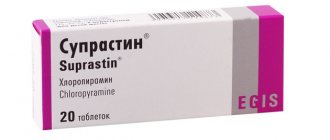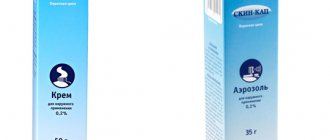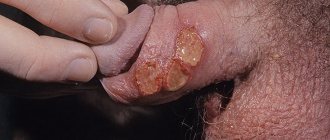28.06.2017
Skin diseases and allergies | Leather
Atopic dermatitis is a disease that continues to remain an incompletely resolved mystery. In the medical literature, it is also called “constitutional eczema”, “constitutional neurodermatitis” and “beignet prurigo”. In essence, it is a chronic, recurrent inflammatory process that affects the human skin.
The name of this disease comes from a Greek word translated as “unusual, alien.” This term first appeared in the medical arena in 1922 to denote the high sensitivity of the human body to external influences, which has genetic roots.
Effective treatments for treating dermatitis
Phototherapy
Plasma therapy
NeoGen procedure
Atopic dermatitis (AD) is a chronic allergic disease characterized by itching and redness of the skin. The pathology often has periods of remission and exacerbation, so signs of dermatitis may disappear, and after a while they may reappear. Most often, the disease is diagnosed in childhood and goes into stable remission by about 4–5 years. However, it is not uncommon for the pathology to continue into adulthood.
In common parlance, the disease is often called diathesis. The terms “atopic eczema” or “scabies” are also known, which is incorrect from a dermatological point of view, but to some extent reflects the specific symptoms of the disease. Patients experience chronic itching of the skin, which can be so severe that it causes insomnia. Constant inflammation and peeling of the skin is often complicated by scratches, the occurrence of which is difficult to control. All this has an extremely negative effect on the protective barrier function of the dermis. As a result, the skin “dries out”, that is, the loss of water from deeper layers, which allows allergens to penetrate even further into the body.
Over the past 15 years, the incidence of AD has almost doubled. Among children, the prevalence of this pathology reaches 20%; in adults, the problem occurs in approximately 2–3% of cases. If we talk about statistics for Russia, the prevalence of pathology in childhood and adolescence is about 443 cases per 100 thousand people. It is known that atopic dermatitis develops in 80% of children whose both parents suffered from this disease, and in 50% if one of the parents has the pathology.
Almost half of patients with AD suffer from other allergic diseases. Back in the last century, the connection between atopic dermatitis, bronchial asthma and hay fever was proven. It was designated the term “atopic triad”. In almost 34% of cases there is a combination of atopic dermatitis with bronchial asthma, in 25% with allergic rhinitis, and in 8% with hay fever.
The issue of treating atopic dermatitis in adults is still very pressing, despite the fact that successful steps have been taken in this direction in recent years. The main problem is that therapy requires a comprehensive individual approach and, as a rule, is quite lengthy. However, in almost half of the cases it is possible to relieve AD symptoms and achieve stable remission.
Bathing
After a light shower to thoroughly cleanse your entire body, apply Atopic Bathing Gel to damp skin from head to toe, massage lightly and rinse thoroughly. Dry your baby with a soft towel using blotting, but not rubbing, movements. After water treatments, apply Atopic skin softening cream for daily care. Apply it several times throughout the day: after washing your hands and washing your face.
When taking a bath, the water temperature should not exceed 36 degrees. Place your child in the water and offer him toys or other entertainment. After 5-7 minutes, apply Atopic Bathing Gel from head to toe and rinse well. After bathing, use Atopic cream for daily care, and if itching bothers you, let the cream absorb, and then treat the affected skin with an anti-itching drug.
What is atopy
The term “atopy” refers to an abnormal reaction of the body to an allergen, which generally explains the nature of the disease.
With the development of atopy, there is an overproduction of IgE antibodies, which are responsible for the appearance of an allergic reaction. AD belongs to the same group of diseases as urticaria, hay fever and bronchial asthma. The pathology is immune-dependent, since the main factor in its development is a mutation in genes. Specifically, we are talking about the genes encoding filaggrin. This structural protein is located in the skin and is involved in the formation of the skin barrier, preventing water loss and the entry of allergens and microorganisms. For this reason, the pathology is inherited from one of the parents, most often from the mother.
Interestingly, atopic dermatitis was essentially known back in ancient times. In those days, this disease was called “idiosyncrasy.” That is, the name reflected the mechanism of development of the pathology - as an increased reaction to an allergen - but did not explain its etiology.
The term “atopy” was first used in 1922 to define the body’s increased sensitivity to external factors.
Skin care
To relieve itching and prevent infection of the affected skin, you need to properly care for your skin:
- It’s better not to take a shower, but to take a cool bath for about 10 minutes; use medicated bathing products with a soft base that cleanse but do not dry the skin;
- moisturizing and softening – the skin should not be dry to prevent flaking and cracking; regularly apply a moisturizer recommended by a dermatologist;
- Do not let your child scratch the affected areas to avoid infection - apply anti-itching products to the atopic areas.
Cream or gel relieves discomfort during an exacerbation and allows you to sleep, eat, and play peacefully. Apply the drug to cleansed skin, treat atopic lesions and the areas around them. Do not exceed the recommended dosage and frequency of use.
Etiology and pathogenesis
The main role in the pathogenesis of atopic dermatitis is played by hereditary determinism, that is, heredity. It is a number of hereditary mutations in genes that lead to disruption of the skin barrier and defects of the immune system. The patient also has hypersensitivity to allergens, an increased number of inflammatory mediators and a number of pathogenic microorganisms such as Staphylococcus aureus and Malassezia furfur.
The pathological reaction of the body, which provokes atopic dermatitis, occurs as a result of the interaction of three factors:
- skin barrier dysfunction;
- disturbances in the functioning of the immune system;
- influence of environmental factors.
In addition to the factors described, skin barrier dysfunction can be affected by:
- Reduced levels of ceramides (lipids), which protect the skin from aggressive environmental influences.
- An increase in proteolytic enzymes - substances that are responsible for the speed of cell reaction to external stimuli.
- Exposure to proteases from house dust mites or Staphylococcus aureus.
Violation of the protective barrier leads to high skin permeability to allergens and toxins. As a result of their penetration into tissues, a pathological immune response occurs. It comes from Th2 (T helper cell type 2), a special type of cell that enhances the adaptive immune response. They activate B lymphocytes that produce immunoglobulin E (IgE), which results in an allergic reaction.
During an immune response, characteristic itching and rash appear on the skin. Constant scratching stimulates the production of anti-inflammatory cytokines, which in turn cause chronic inflammation. As a result, the epidermis intensively absorbs allergens, which provokes microbial colonization of the skin.
What complications can there be?
If atopic dermatitis is not properly treated, the disease will develop and lead to complications. Like manifestations, the severity and severity of complications are directly related to the age of the patient. The infantile phase is characterized by complications of atopic dermatitis such as candidiasis and Kaposi's eczema herpetiformis. In childhood, staphylococcal impetigo, molluscum contagiosum and chronic papillomavirus infection are observed. Complications in the adult phase are represented by dermatophytosis and keratomycosis. [10]
Without treatment, atopic dermatitis can significantly reduce the quality of life of the patient and his family. Discomfort is primarily associated with a person’s appearance - with dermatitis, noticeable itchy spots appear on the body, which cause anxiety among others. And although atopic dermatitis cannot be contracted, people are wary of patients and do not want to come into contact with them. Patients experience a continuous desire to scratch the inflammation, so their posture and facial expression look tense and repulsive. Therefore, when it comes to dermatitis, one cannot fail to mention the neurotic and psychological syndromes that this disease entails.
How does the immune system normally work?
The concept of atopic dermatitis reflects the immunological mechanism of pathology development. It is based on the body’s ability to produce an excess amount of antibodies in response to incoming allergens. Antibodies combine with the allergen, which provokes a more pronounced allergic reaction than should be normal.
Let's figure out how the immune system should work normally. It’s worth starting with the fact that the system is represented by several organs (thymus, lymph nodes) and immunocompetent cells. Their main task is to protect the body from foreign elements: viruses, bacteria, fungi and allergens. This is accomplished through the development of protective reactions that are provided by certain cells. That is, the immune system recognizes foreign elements, destroys them and forms immunological memory.
Two types of cells help to perform such functions - B-lymphocytes and T-lymphocytes (killers, suppressors and helpers). Each type of cell has its own role in the operation of the system. Thus, B lymphocytes recognize foreign elements and form memory cells. T-killers are necessary to destroy foreign elements, T-helpers are involved in strengthening the immune response in response to the penetration of pathogenic agents. Suppressor T cells regulate the strength of the immune response by controlling the number of helper and killer cells.
The key to proper functioning of the immune system is a certain ratio of immunocompetent cells. With any quantitative disturbances, the immune reaction becomes pronounced, which is what happens during atopic dermatitis.
To prevent repeated exposure to the pathogen, the immune system forms a memory. It is synthesized by certain antibodies, or immunoglobulins, that form on the surface of B lymphocytes. Antibodies are proteins that have high specificity for antigens. As a result of their connection with antigens, an immune response is triggered in the body.
Several types of antibodies may be present in the body - immunoglobulins A, M, G and E. Each of them has its own function. For example, immunoglobulins A are responsible for protecting the respiratory tract. Immunoglobulins M and G are components of humoral immunity and arise as a result of the penetration of bacteria and viruses. Also, immunoglobulins G appear some time after the disease and can remain in the body for up to several years.
Immunoglobulins E arise as a response to the penetration of allergens. They are the ones who trigger an allergic reaction, which is accompanied by the release of various biological substances (for example, histamine). Under the influence of these substances, a person develops characteristic allergy symptoms: redness, itching, swelling.
Normally, the body contains very little immunoglobulin E, since these cells quickly disintegrate. However, as a result of a genetic mutation, some people have very high levels of these immunoglobulins, which increases the risk of developing atopic dermatitis on the face and body.
When it first encounters a foreign element, the immune system synthesizes certain antibodies. They help protect the body from re-infection for a certain period of time. During an allergic reaction, the process occurs differently. Upon contact with an allergen, a sufficient amount of antibodies is produced, which will subsequently bind to the allergen. Upon repeated contact, an antigen-antibody complex appears. An allergen acts as an antigen. An antibody is a protein produced by the body.
The antigen-antibody complex triggers a whole chain of immunoallergic reactions. With a large amount of immunoglobulin E, a pronounced and prolonged allergy appears. Simultaneously with the allergic reaction, a number of biologically active substances are released. It is these substances that trigger pathological processes that lead to the appearance of typical allergy symptoms. If the amount of immunoglobulins remains high, then the allergic reaction does not disappear, which indicates the development of atopy.
How to choose products that are right for your child
A dermatologist may recommend not one, but several drugs to choose from. They have a similar mechanism of action, but their prices may differ significantly. It depends on the active and auxiliary substances, manufacturer, and release form. When choosing a cream for a child’s atopic skin, you need to take into account possible individual intolerance to individual components.
You need to purchase drugs from well-known manufacturers with a good reputation: Russian, European, American. It is equally important to contact large pharmacy chains that work directly with manufacturers and control the quality of drugs on sale - this will protect you from purchasing counterfeit drugs. Consider the age of the child: choose creams and gels with a pleasant smell so that the child enjoys going to the shower.v
When choosing drugs for oral administration, it is preferable to buy syrups, powders, drops, rather than tablets and capsules that are difficult for a child to swallow.
Causes
A genetic mutation by itself cannot provoke the development of AD, since the disease occurs due to a number of provoking factors. These include:
- Atopenes (environmental allergens that provoke the production of allergic antibodies). They can be food (for example, milk, wheat, soy), pollen (wormwood, alder, ragweed), dust (bed mites, animal hair).
- Allergenic foods (spicy foods, alcohol, sweets, smoked foods, etc.).
- Medicines (vitamins, antibiotics, sulfonamides).
- Emotional stress.
- Frequent hypothermia.
In addition, we can identify factors that play a key role in exacerbation of the disease. This:
- Air pollution.
- Harmful working conditions (for example, if during work contamination occurs with solid oil particles or the skin is exposed to aggressive detergents).
- Viral infections (HIV, infectious hepatitis, etc.).
- Diseases of the gastrointestinal tract (pancreatitis, infectious gastritis).
- Pathologies of the endocrine system (thyrotoxicosis, dysmenorrhea, etc.).
Important! It is impossible to become infected with atopic dermatitis from another person. The disease is not transmitted by contact or airborne droplets.
Atopic patches (ATP)
Atopic patches are a type of epidermal patches in which specially prepared allergens are applied to the uninjured skin of the patient's back and sealed. They are used to detect delayed allergenic reactions that cannot be detected by skin prick tests.
Atopic patches are a very good addition to the diagnosis of AD with substances that the patient must eliminate from life in order to reduce the symptoms of the disease.
Atopic patches
Skin application with SAFT nutrition test
SAFT is a food allergy testing method primarily used for young children. The technique involves eating the food that is suspected of causing the child's allergy and monitoring symptoms.
If erythema, itching and swelling of the skin occurs during use, this indicates a positive result, that is, an allergy. Most often, this test is carried out on allergenic fruits, vegetables, milk, chicken eggs and nuts.
Determination of total concentration of IgE antibodies
The simplest test performed to diagnose AD is to determine the total concentration of IgE antibodies in the blood. This concentration is indicated in IU, and the standard is 100 IU/ml. In patients with atopy, the total concentration of IgE antibodies increases by 80%. There is often a relationship between IgE concentrations 10 times normal and the clinical condition of the patient's skin. The higher the antibody concentration, the worse and more severe the skin changes.
Therefore, patients with atopic dermatitis can be divided into two groups: those with elevated antibody levels and those with normal antibody levels (about 20% of patients).
- In the first case, we talk about extrinsic atopic dermatitis (extrinsic atopic dermatitis - EAD) because the symptoms are caused by allergens coming from the environment.
- Less commonly, we deal with intrinsic AD (intrinsic atopic dermatitis - IAD), where symptoms arise from non-immune causes, such as a skin defect or a nonspecific inflammatory response. This means that an IgE result within the normal range does not necessarily rule out atopic dermatitis.








